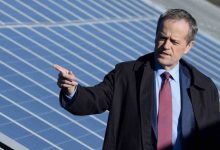“I can’t give you a sure-fire formula for success,
but I can give you a formula for failure:
try to please everybody all the time.” Herb Swope
Reflecting after counting to ten
I strongly supported ALP electricity and climate change policy in the recent Federal Election. I still do.
However, that policy was sold disastrously by the ALP leadership. In the spirit of kicking the person when they are down (so it won’t be done so badly next time) my observations are:
- Not having a view on what the policy would cost was completely absurd. Absolute amateur hour. Particularly as the cost needn’t be large at all, particularly if renewable energy certificates were allowed to be used for the safeguard mechanism.
- The policy could have been sold as lowering electricity prices and at providing strong emissions reduction at much less cost than in Europe. It’s amazingly frustrating to see good policy destroyed by crap sales.
- The policies would have been better served by being worked out in more detail. If, and this will probably never happen again, you want to spell out policy before an election, work it out in detail. Details matter.
- The ALP needed to get the unions on side particularly in QLD. Essentially you had the CFMEU more or less working against Federal carbon policy in QLD, requiring a pledge that ALP candidates would support coal mining.
- At the same time you had a retired Bob Brown looking like a hippy protestor driving his merry prankster convoy into town telling Queenslanders how to run their business. This could have gone well but in fact was a disaster.
- The ALP needs to work out its attitude towards new coal mines. There is now some legal precedent to suggest that coal mines need to have carbon impact taken into account.
- It may not look like it today but coal mining is on the way out and rather than being in denial QLD in particular needs to find the next growth sector.
- More to the point being two faced about it can sometimes be clever but is increasingly being seen as weak and hypocritical.
Here’s hoping Angus Taylor can learn to listen
Its’ very clear that prior to the election Angus Taylor and the vast majority of the electricity industry were on diametrically opposed path.
There was COAG level disagreements and Taylor seemed to ignore or be ignorant of the ESB, AEMO, AEMC and the ISP, never mind what the Gentailers big and small were doing. So it’s natural to see this as a problem area.
But let’s see how it goes.
China – coal import requirements still growing
Australia’s dependency on China is so obvious there is no need to go through the stats but for the record 37% of Australia’s merchandise exports go to China and 57% of Australia’s total merchandise exports are coal, gas and metals(iron ore).
China is the dominant part of Asia and the figure below makes it clear why the global warming issue has grown much faster than expected ten years ago.

And being blunt, coal in China explains most of the growth in Asian CO2 emissions.

Australia is helping to supply the coal that makes that possible. China itself is no longer growing its coal production. But it is growing its thermal electricity and steel production and that takes coal. So the increase comes from countries like Australia and Indonesia.
Not only that but business in China, like business in every other country tend to invest in both upstream and downstream ends of the value chain. In this case that means investing in the Australian coal industry.

Noteworthy research, speeches – Tim Nelson AEMC
This column has always had a lot of time for Tim Nelson, formerly of AGL and now General Manager Strategy at the AEMC.
Click here for a link to a recent speech.
Of course, it solves no problems and provides no suggestions, but it does provide some excellent background and was an easy read.
The market action
REC prices were down, consumption was very soft leading to modestly lower spot prices. Note that South Australia is seeing a marked increase in negative price periods.
Futures prices were little impacted. Victorian coal generation is well down in the last 30 days compared to PCP.


We added in European carbon prices in A$. Very profitable long trade the last couple of years. As it should be.
By and large being long carbon permits should be a good long term, like really long term, strategy, up until some cheap form of decarbonization is found or we are decarbonized.
Generation by fuel
We’ve previously drawn attention to the reduction in hydro, but this week the key feature is the fall over the last 30 days of Victorian coal generation compared to PCP – down an annualized 8 TWh with a lift in the VRE (variable renewable) share from 10% to 15%.




Volumes
Very soft consumption driven by a slow start to Winter.

Base Load Futures, $MWH
Futures prices were little impacted by the election.


Gas Prices

Figure 11 30 day moving average of Adelaide, Brisbane, Sydney STTM price. Source: AEMO









